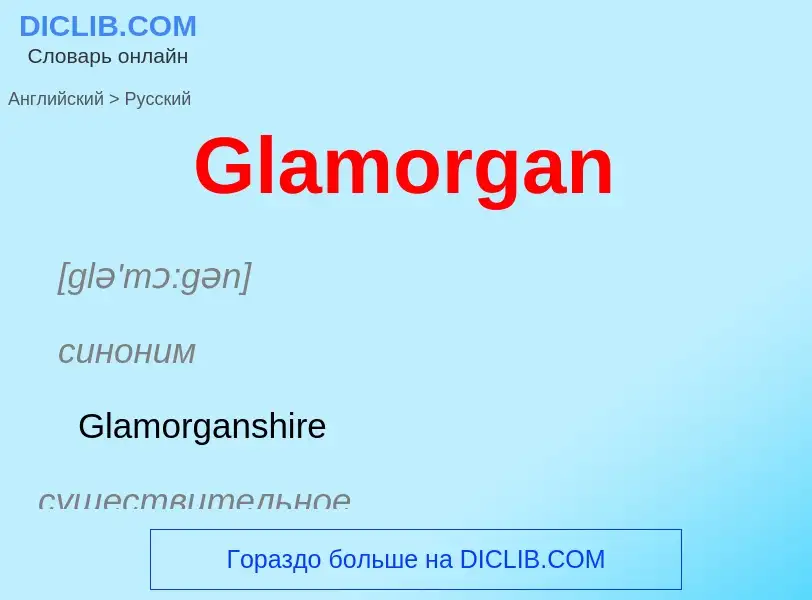Перевод и анализ слов искусственным интеллектом ChatGPT
На этой странице Вы можете получить подробный анализ слова или словосочетания, произведенный с помощью лучшей на сегодняшний день технологии искусственного интеллекта:
- как употребляется слово
- частота употребления
- используется оно чаще в устной или письменной речи
- варианты перевода слова
- примеры употребления (несколько фраз с переводом)
- этимология
Glamorgan - перевод на русский
[glə'mɔ:gən]
синоним
существительное
география
Гламорган
Смотрите также
Определение
Википедия
Glamorgan (), or sometimes Glamorganshire (Welsh: Morgannwg [mɔrˈɡanʊɡ] or Sir Forgannwg [ˈsiːr vɔrˈɡanʊɡ]), is one of the thirteen historic counties of Wales and a former administrative county of Wales. Originally an early medieval petty kingdom of varying boundaries known in Welsh as the Kingdom of Morgannwg (or Glywysing), which was then invaded and taken over by the Normans as the Lordship of Glamorgan. The area that became known as Glamorgan was both a rural, pastoral area, and a conflict point between the Norman lords and the Welsh princes. It was defined by a large concentration of castles.
After falling under English rule in the 16th century, Glamorgan became a more stable county, and exploited its natural resources to become an important part of the Industrial Revolution. Glamorgan was the most populous and industrialised county in Wales, and was once called the "crucible of the Industrial Revolution", as it contained the world centres of three metallurgical industries (iron, steel and copper) and its rich resources of coal.
Under the Local Government Act 1972, the county boroughs and administrative county of Glamorgan were abolished on 1 April 1974, with three new counties being established, each containing a former county borough: West Glamorgan, Mid Glamorgan, South Glamorgan. The name also survives in that of Vale of Glamorgan, a county borough.
Glamorgan comprises distinct regions: the industrial valleys, the agricultural vale and the scenic Gower Peninsula. The county has boundaries with Brecknockshire (north), Monmouthshire (east), Carmarthenshire (west), and to the south is the Bristol Channel. The total area is 2,100 km2 (811 sq mi), and the total population of the three preserved counties of Glamorgan in 1991 was 1,288,309. Glamorgan contains two cities, Cardiff, the county town and from 1955 the capital city of Wales, and Swansea. The highest point in the county is Craig y Llyn (600 metres (2,000 ft)) which is situated near the village of Rhigos in the Cynon Valley.

.jpg?width=200)
![[[Freddie Welsh]], one of several World title boxing Champions to come from Glamorgan [[Freddie Welsh]], one of several World title boxing Champions to come from Glamorgan](https://commons.wikimedia.org/wiki/Special:FilePath/Freddie Welsh 1920s.jpg?width=200)
![''Dowlais Ironworks'' by [[George Childs]] (1840) ''Dowlais Ironworks'' by [[George Childs]] (1840)](https://commons.wikimedia.org/wiki/Special:FilePath/George Childs Dowlais Ironworks 1840.jpg?width=200)




![Lewis Merthyr Colliery, Rhondda which, since 1986, has been redeveloped for opening to the public as the [[Rhondda Heritage Park]]. Lewis Merthyr Colliery, Rhondda which, since 1986, has been redeveloped for opening to the public as the [[Rhondda Heritage Park]].](https://commons.wikimedia.org/wiki/Special:FilePath/Lewis Merthyr Colliery.jpg?width=200)





.jpg?width=200)
